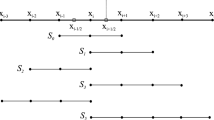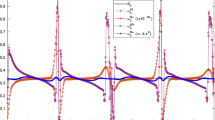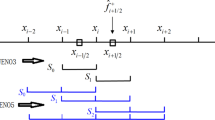Weighted essentially non-oscillatory (WENO) methods can simultaneously provide the high order of accuracy, high bandwidth-resolving efficiency, and shock-capturing capability required for the detailed simulation of compressible turbulence. However, rigorous analysis of the actual versus theoretical error properties of these non-linear numerical methods is difficult. We use a bandwidth-optimized WENO scheme to conduct direct numerical simulations of two- and three-dimensional decaying isotropic turbulence, and we evaluate the performance of quantitative indicators of local WENO adaptation behavior within the resulting flow fields. One aspect of this assessment is the demarcation of shock-containing and smooth regions where the WENO method should, respectively, engage its adaptation mechanism and revert to its linear optimal stencil. Our results show that these indicators, when synthesized properly, can provide valuable quantitative information suitable for statistical characterization.
Similar content being viewed by others
References
Blaisdell G.A., and Ristorcelli J.R. (1996). Consistent initial conditions for the DNS of compressible turbulence. In Proc. 49th Annual Meeting of the Division of Fluid Dynamics of the American Physical Society, November 24–26
Garnier E., Mossi M., Sagaut P., Comte P., Deville M. (1999). On the use of shock-capturing schemes for large-eddy simulations. J. Comput. Phys. 153, 273–311
Jiang G.-S., Shu C.-W. (1996). Efficient implementation of weighted ENO schemes. J. Comput. Phys. 126, 202–228
Lee S., Lele S.K., Moin P. (1991). Eddy shocklets in decaying compressible turbulence. Phys. Fluids A 3, 657–664
Lele S.K. (1992). Compact finite-difference schemes with spectral-like resolution. J. Comput. Phys. 103, 16–42
Liu X.-D., Osher S., Chan T. (1994). Weighted essentially non-oscillatory schemes. J. Comput. Phys. 115, 200–212
Martín, M. P. (2000). Shock-capturing and the LES of high-speed flows. In Annual Research Briefs, Center for Turbulence Research, pp. 193–198
Martín, M. P., Taylor E.M., Wu M., and Weirs V.G. (2006). A bandwidth-optimized WENO scheme for the direct numerical simulation of compressible turbulence. J. Comput. Phys. in press.
Weirs V.G. (2005). A numerical method for the direct simulation of compressible turbulence. Ph.D thesis, University of Minnesota.
Wu M., Taylor E.M., and Martín, M. P. (2005). Assessment of STBLI DNS data and comparison against experiments. Paper 2005–4895, American Institute of Aeronautics and Astronautics.
Author information
Authors and Affiliations
Corresponding author
Rights and permissions
About this article
Cite this article
Taylor, E.M., Martín, M.P. Stencil Adaptation Properties of a WENO Scheme in Direct Numerical Simulations of Compressible Turbulence. J Sci Comput 30, 533–554 (2007). https://doi.org/10.1007/s10915-006-9126-4
Published:
Issue Date:
DOI: https://doi.org/10.1007/s10915-006-9126-4




